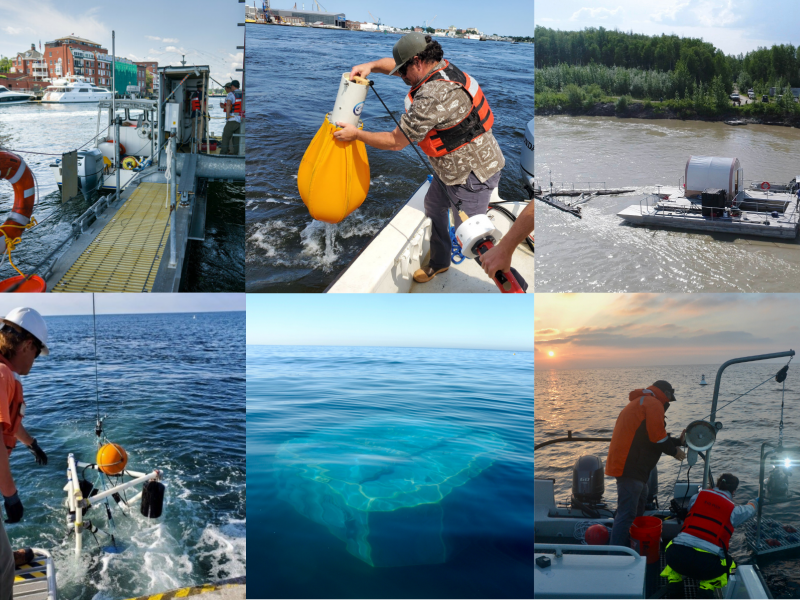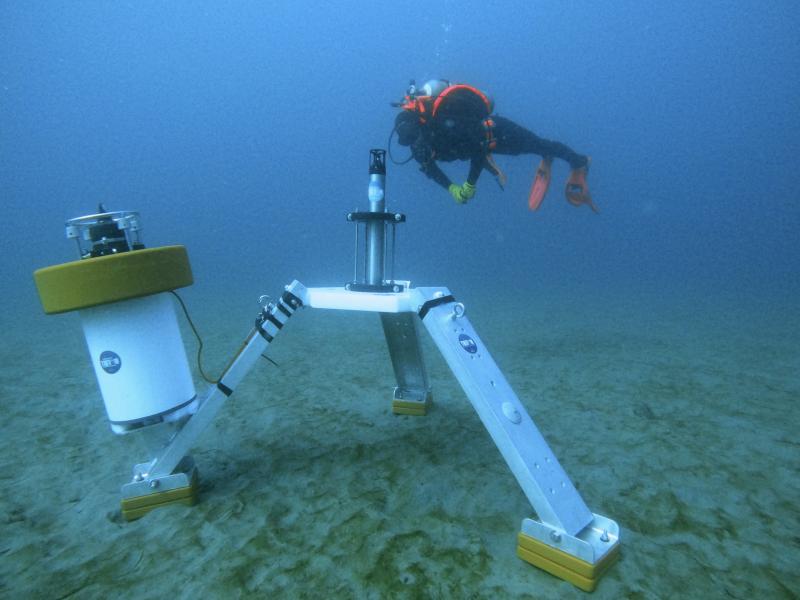
Triton Field Trials
Conducted from 2018 to 2022, the Triton Field Trials (TFiT) supported the advancement of knowledge around the impacts of marine energy devices. This task explored methods and instrumentation used to monitor the main environmental stressors related to marine energy devices and performed field tests on those various technologies at diverse marine energy deployment sites. Additionally, TFiT conducted outreach to subject matter experts and stakeholders in the industry, including developers, regulators, and consultants, to determine the marine energy industry's needs and how to best serve them.

The environmental stressors addressed by TFiT work were identified from the OES-Environmental "State of the Science Report." OES-Environmental is a collaborative Water Power Technologies Office project that collates and synthesizes information and scientific research about environmental effects of marine energy on a global scale (see this brochure to learn more). The "State of the Science Report" helped identify the industry's most pressing environmental concerns related to marine energy, including changes in habitat, collision risk, electromagnetic fields, and underwater noise. TFiT focused on the field-testing, technology, and sensor development related to understanding and quantifying these stressors. As part of this effort, TFiT also explored new potential stressors, including anthropogenic light from array scale deployments, reviewed predictive modeling methods, discussed communications for marine energy projects, and assessed marine energy sustainability and life cycle assessments. Results and recommendations for each of these areas of research were published in the Journal of Marine Science and Engineering special issue titled “Technology and Methods for Environmental Monitoring of Marine Renewable Energy” and include:
- Triton Field Trials: Promoting Consistent Environmental Monitoring Methodologies for Marine Energy Sites
- Use of a 360-Degree Underwater Camera to Characterize Artificial Reef and Fish Aggregating Effects around Marine Energy Devices
- What’s in My Toolkit? A Review of Technologies for Assessing Changes in Habitats Caused by Marine Energy Development
- Capabilities of an Acoustic Camera to Inform Fish Collision Risk with Current Energy Converter Turbines
- Underwater Noise Measurements around a Tidal Turbine in a Busy Port Setting
- Quantifying Background Magnetic Fields at Marine Energy Sites: Challenges and Recommendations
- A Review of Modeling Approaches for Understanding and Monitoring the Environmental Effects of Marine Renewable Energy
- Minimizing Ecological Impacts of Marine Energy Lighting
- A Framework for Effective Science Communication and Outreach Strategies for Marine Energy Projects
- A Summary of Environmental Monitoring Recommendations for Marine Energy Development That Considers Life Cycle Sustainability
TFiT’s research process
An initial review was carried out to identify the standard sensors and research methods used by 118 marine energy projects around the world to monitor changes in habitat, collision risk, electromagnetic fields, and underwater noise. Subject matter experts were consulted on the effectiveness and feasibility of each method and technology. The approaches and technologies deemed most promising were then tested at several field sites with diverse physical and biological characteristics and resource conditions around the United States. Sites and devices included a riverine turbine at the Tanana River Hydrokinetic Test Site, a tidal turbine at the University of New Hampshire Living Bridge Project, a CalWave Power Technologies wave energy converter at Scripps Institution of Oceanography, and tests in a tidal channel at PNNL-Sequim.
TFiT’s research, field campaigns, and industry outreach informed recommendations for technology and methods to improve efficiency and reduce costs for environmental monitoring of marine energy devices. These recommendations are published in the Journal of Marine Science and Engineering special issue. The recommendations support the comparability and transferability between device types and provide consistency for evaluating environmental and ecological effects among project sites for the marine energy industry.

Learn more about TFiT’s stressor research:
-
Changes in habitat
-
Collision risk
-
Underwater noise
-
Electromagnetic fields
-
Marine energy predictive modeling
Read the special issue here.

